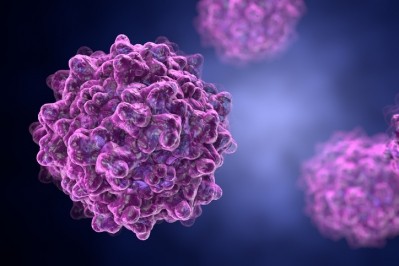Aptamer Group and Bio-Works Technologies align for improved purification and scale up of gene therapy vectors

The alliance sees the UK headquartered Aptamer Group entering into an agreement with Sweden's Bio-Works Technologies to co-develop a new affinity resin for improved purification and scale up of gene therapy vectors.
Under the agreement, Aptamer will develop an Optimer ligand that is capable of binding and of eluting a viral vector. Bio-Works will then develop a derivatized resin by coupling the Optimer to its patented WorkBeads agarose beads.
Nucleic acid-based affinity ligands, the Optimer binders are isolated entirely in vitro. “There are no animals involved in their development and so have no such reliance on the immune system,” explained David Bunka, CTO, Aptamer Group.
That characteristic makes Optimers well suited to a range of applications, and against all sorts of targets, not just viral vectors, he told BioPharma-Reporter.
“The ability to control the ‘elution conditions’ for an Optimer is a significant advantage in any purification process, but is of most interest when the target, viral vectors, for instance, is easily damaged or denatured by the elution conditions that would be needed for antibody release. In those cases, a mild elution condition used by Optimer binders is highly advantageous.”
Controlling the development process
The company claims the Optimer platform provides significant improvements in downstream purification of viral vectors.
“Some viral vectors are quite fragile. They can be damaged or destroyed if they are not treated carefully at every stage of the manufacturing process. Protein purification using affinity ligands such as antibodies may reliably separate the viral vector from the other proteins in the production feedstock, but these antibodies often do not release the vector without the use of harsh, often denaturing elution conditions. This results in a significant reduction in yield or a complete failure to purify a viable product.
"The Optimer platform is carried out entirely in vitro. This allows us to control the conditions at every stage of the development process; meaning that we can ensure that the Optimers recognize the viral vector target amongst the mix of other proteins, but it also allows us to develop Optimer binders that release the viral vector under conditions which are not harmful or damaging to the final product. This significantly improves the yield of a functional product,” said Bunka.
High binding capacity
What are BioWorks’ agarose beads designed to do?
“The BioWorks WorkBeads agarose-based resins are a made from a proprietary agarose formulation which gives high binding capacity and allows the use of high flow rates. This resin will for the support on which the Optimer binders will be immobilized to create a high-performance purification resin.
“In the first instance, this will be applied to the purification of viral vectors, but other targets are just as amenable to the combined approach,” said the CTO.
Jonathan Royce, CEO of Bio-Works, said there was a clear need for affinity resins based on a technology other than camelid-antibodies in the gene therapy market.
The current offerings for the affinity purification of viral vectors offer low binding capacity and are not cleanable using standard clean-in-place (CIP) protocols, he added.
As viral vector production scales up and matures, alternative solutions are required, said the CEO.
Weighing in on that, Bunka said.
“Any reagent used in the manufacture and purification of therapeutics needs to be readily produced in large amounts and through reliable, scalable processes. These manufacturing benefits are some of the biggest advantages of the Optimer technology. Being composed of nucleic acids, Optimers are readily synthesized using well established, highly controlled, and scalable chemical processes. This addresses the need for reliable manufacture of large batches of the binding ligand, which is not readily achieved with other ligands.”

















